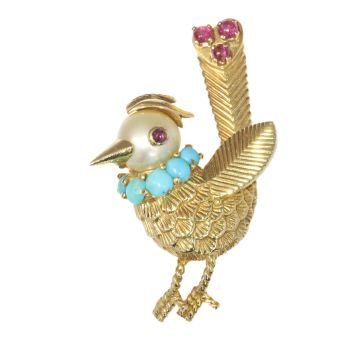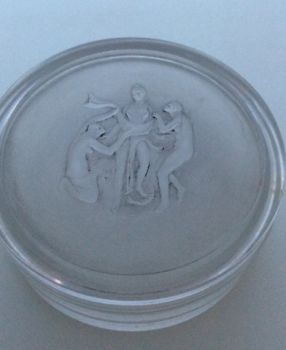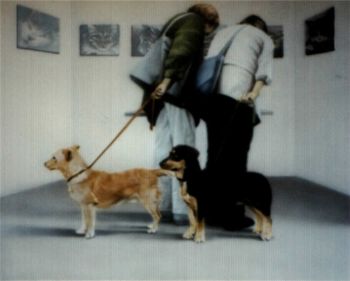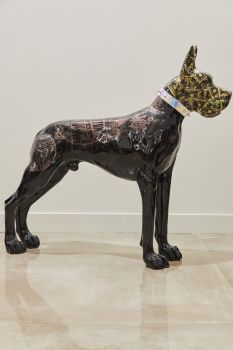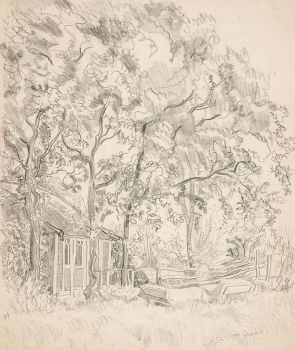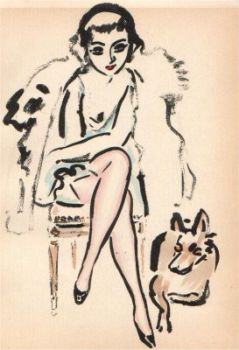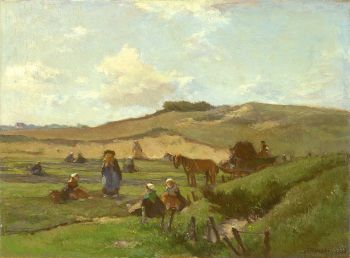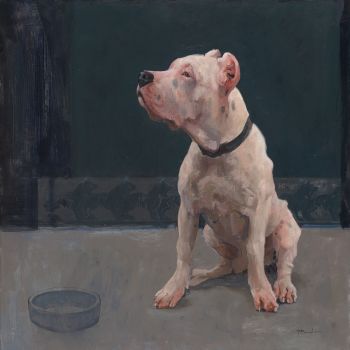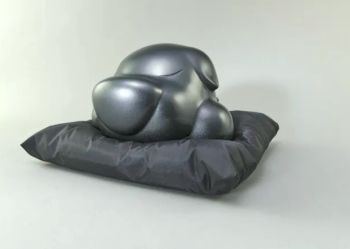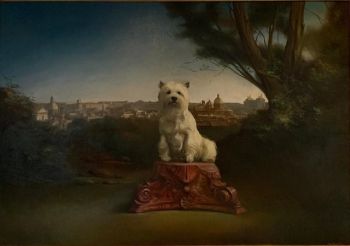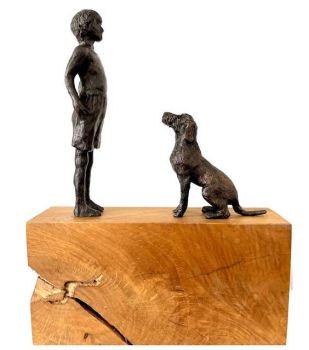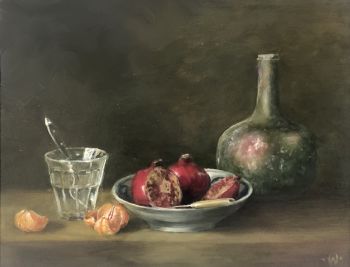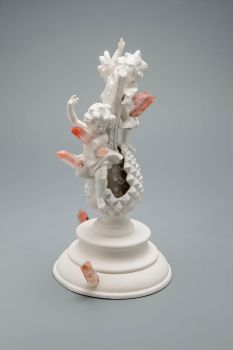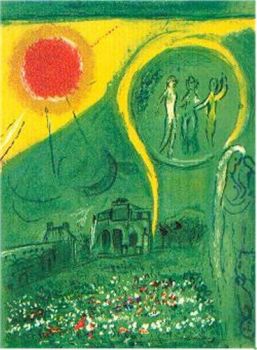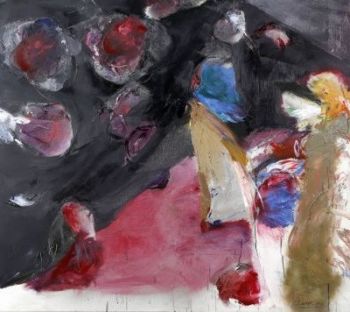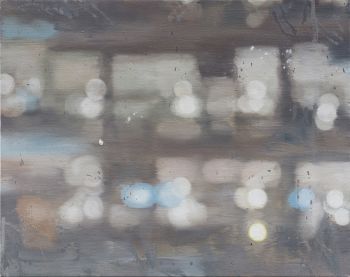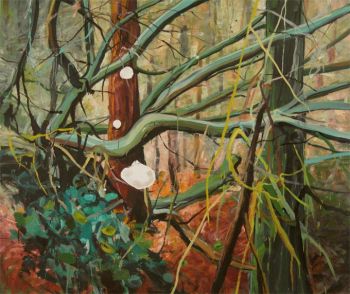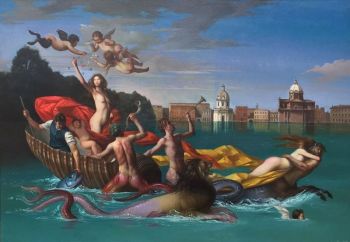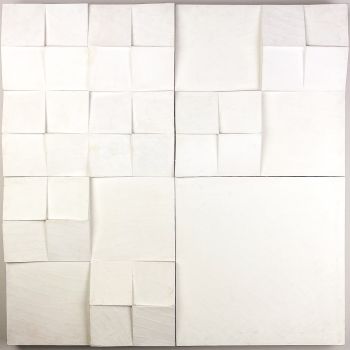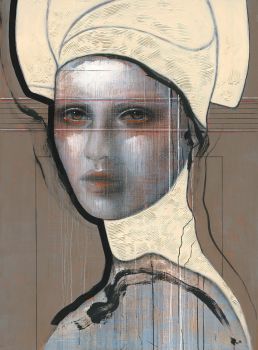Set Arita 'dog training' plates, 18th century 1700 - 1730
Artiste Inconnu
glaçagePorcelainePeindre
22 cm
ConditionGood
€ 2.000
Verkoulen Oriental & European Antiques
- Sur l'oeuvre d'artThree rare Kakiemon decorated plates in blue and white depicting a dog trainer in the center surrounded by low moulded relief decoration, 18th century, around 1700-1730, Arita, Japan.
Blue and white
Dimensions: 22 cm diameter.
Three rare Kakiemon decorated plates with flanged (eight-foliated) border and brown edged rim.
The low moulded white relief decoration is a depiction of three scholars from a group called 'The Seven Sages of the Bamboo Grove'. The Sages are associated with a hedonistic lifestyle of drinking, poetry and music. Although the origin of the group and stories lay back in ancient China, it was widely represented in Japanese art from the 16th century to the end of the Edo period (1615–1868).
The central medaillon of the plates is decorated with a 'Namban' style figure of a European with a long legged and tailed dog creature. This is the kind of novelty design that was particularly popular in the Nagasaki market both with visiting Japanese and Dutch buyers. The motif has a theatrical origin. This kind of figure was in England called a “Jack Pudding”, in Germany “Hans Wurst” and in Dutch "Hans Buling". He was a comic and remarkable figure: a combination of a fool and clown with a coarse appearance, occasionally depicted as an animal trainer! The name Jack Pudding is derived from a buffoon who performs pudding tricks, such as swallowing a certain number of yards of black-pudding (blood pudding in a sausage casing).
These kind of subjects are also closely linked to a "Merry Andrew". When an audience began to being bored by a performance, the Merry Andrew would stir their attention by some antic, slapstick or clever quip. There is for example a mid 18th century Delft plate design known which shows two figures; the Mountebank Hans Buling (a Dutchman), and his assistant Merry Andrew with their monkey on a stage. This is a scene taken of the prints called “Cries of London” by Marcellus Laroon (1653-1702).
The reverse of the plates have a character mark 'arashi' (嵐) meaning storm. It is also discussed that it could be a variant of the Chinese character 'shòu' (壽) standing for longevity. The last possibility is less likely because it identifies the plates coming from the Higuchi kiln in the Nangawara valley and would date them later around 1770-1780.
Kakiemon is a production technique (and style) of generations of the Kakiemon family who established their workshop near Arita on the island of Kyushu. The pottery tradition which uses very fine white clay has survived until today: Kakiemon XV is currently active and is regarded as one of the ‘living national treasures’ of Japan.
These plates are decorated in 'Nanban' style because of the European figure depicted in the center of the plates. In the 16th century, the Japanese termed Europeans and foreigners as ‘Nanban’, meaning 'southern barbarians'. Despite Europe being west of Japan, this label originated from the Chinese view of southern foreigners as uncivilized. This term was broadened and copied by the Japanese culture, leading to foreigners being referred to as "Nanban" by Japanese citizens.
Condition: Very good, only one plate with a minor rim chip. No hairlines, restorations or other chips.
Provenance:
-Christies 13th May of 200, 'Live Auction 5967, Japanese Art & Design', lot 7.
-Lempertz no. 307815.
-German Private Collection 2024. - Sur l'artiste
Il peut arriver qu'un artiste ou un créateur soit inconnu.
Certaines œuvres ne doivent pas être déterminées par qui elles sont faites ou elles sont faites par (un groupe d') artisans. Les exemples sont des statues de l'Antiquité, des meubles, des miroirs ou des signatures qui ne sont pas claires ou lisibles, mais aussi certaines œuvres ne sont pas signées du tout.
Vous pouvez également trouver la description suivante :
•"Attribué à …." A leur avis probablement une oeuvre de l'artiste, au moins en partie
•« Atelier de …. ou « Atelier de » À leur avis, une œuvre exécutée dans l'atelier ou l'atelier de l'artiste, éventuellement sous sa direction
•« Cercle de… ». A leur avis une oeuvre de la période de l'artiste témoignant de son influence, étroitement associée à l'artiste mais pas forcément son élève
•« Style de … ». ou "Suiveur de ...." Selon eux, une œuvre exécutée dans le style de l'artiste mais pas nécessairement par un élève ; peut être contemporain ou presque contemporain
•« Manière de… ». A leur avis une oeuvre dans le style de l'artiste mais d'une date plus tardive
•"Après …." A leur avis une copie (quelle qu'en soit la date) d'une oeuvre de l'artiste
•« Signé… », « Daté… ». ou « Inscrit » À leur avis, l'œuvre a été signée/datée/inscrite par l'artiste. L'ajout d'un point d'interrogation indique un élément de doute
• "Avec signature ….", "Avec date ….", "Avec inscription …." ou "Porte signature/date/inscription" à leur avis la signature/date/inscription a été ajoutée par quelqu'un d'autre que l'artiste
Êtes-vous intéressé par l'achat de cette oeuvre?
Artwork details
Related artworks
- 1 - 4 / 12
Artiste Inconnu
The Stamford Raffles Secretaires.1800 - 1813
Prix sur demandeZebregs & Röell - Fine Art - Antiques
Artiste Inconnu
UN FILET D'IVOIRE D'UN DUTCHMAN TENANT UN COCKEREL18th century
Prix sur demandeZebregs & Röell - Fine Art - Antiques
Artiste Inconnu
A rare Japanese export lacquer medical instrument box1650 - 1700
Prix sur demandeZebregs & Röell - Fine Art - Antiques
Artiste Inconnu
UN RARE GRAND TÉLESCOPE EN CUIR LAQUÉ JAPONAIS1750 - 1800
Prix sur demandeZebregs & Röell - Fine Art - Antiques
1 - 4 / 21- 1 - 4 / 24
Johannes Evert Akkeringa
'Nettenboetsters' in the Dunes1861 - 1942
Prix sur demandeStudio 2000 Art Gallery
1 - 4 / 24- 1 - 4 / 24
- 1 - 4 / 8









